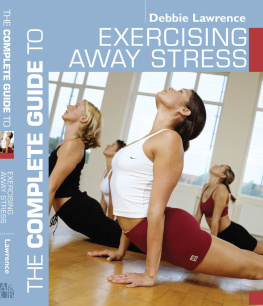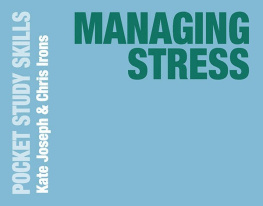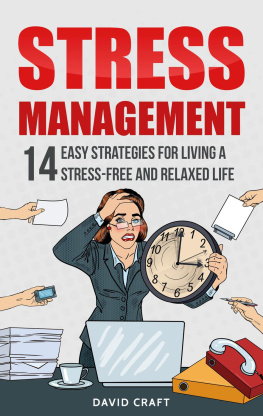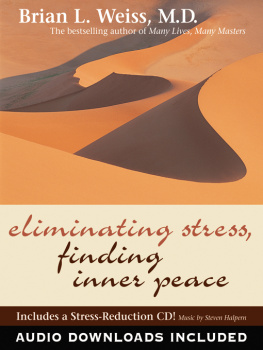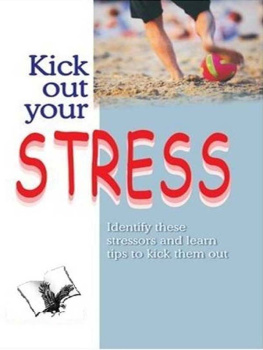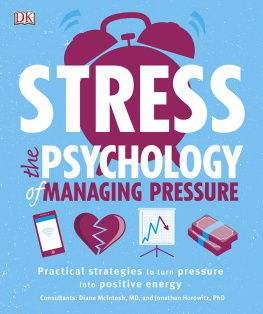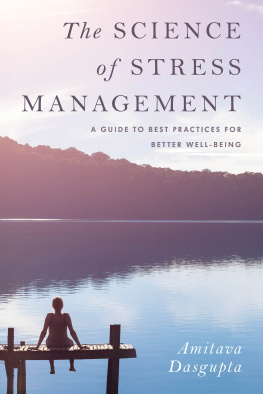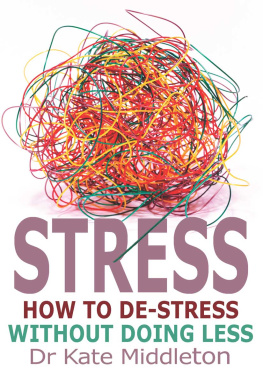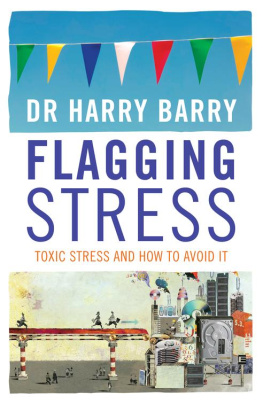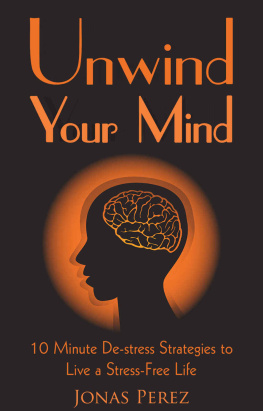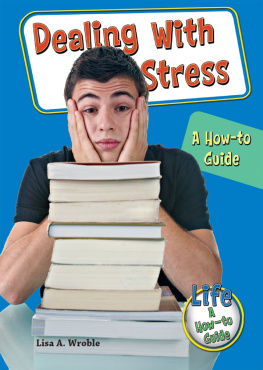
CONTENTS
INTRODUCTION
Stress is a recognised threat to our mental health and overall well-being. Stress-related disorders are listed on the ICD 10 mental health classification system for mental disorders. These include: anxiety disorders, phobias, obsessive-compulsive and post-traumatic stress disorders. The mental health foundation suggests that twelve million adults visit their GP each year with mental health problems. Most of these are diagnosed as suffering from anxiety and depression that is stress-related.
Stress is recognised as a major cause of absenteeism from work (HMSO, 1988). Occupational stress has been identified as a major health and safety issue in British workplaces (TUC, 1996) and the prescription of psychotherapeutic drugs has increased over recent years. Stress has also been linked as a contributory factor to a number of other medical conditions, including coronary heart disease, hypertension, strokes, some cancers, irritable bowel syndrome and so on.
From the moment we are born to the moment of our death we are exposed to experiences and life events that can have either a positive or negative affect on our mental and emotional well-being. Work (promotion, redundancy), relationships (marriage, divorce, arguments), life-changing events (births, deaths), family matters (health, vacations) and financial pressures (mortgages, loans) are all common causes of stress that will affect most people at some stage in their life. Therefore, it appears that stress is becoming a natural part of modern living.
If stress is to be viewed as a naturally occurring response to living in a fast-paced world, then managing stress and coping skills for stressful situations must also be seen as a priority. Training and education on how to manage stress need to be provided if individuals are to live happily, peacefully and in harmony with themselves and each other.
Personal trainers frequently act as sounding boards for their clients problems. They can also play a key role within a stress management programme by recommending exercise and activity and promoting behavioural changes that will help to manage the physical demands of stress. They can also act as a resource for providing information on other practical techniques that will assist with the emotional, mental and behavioural effects of stress. However, personal trainers need to be aware of the limitations of their knowledge and also of their personal boundaries. They need to be able to recognise when it may benefit an individual to be referred to other specialists such as counsellors, psychotherapists or alternative therapists. Alternative therapies (massage, reiki and so on) can also play an important role if an individual appears particularly overwhelmed by their stresses.
The aim of this book is to provide a resource for all persons interested in stress and stress management techniques. There is a broad range of knowledge available about this subject area. In this book, I have attempted to introduce fields that can be explored and researched further by interested persons, through professional training and qualifications. I have drawn the information from my personal experience and my work experience as a personal trainer, a counsellor and a teacher. I have also drawn from my personal study of these areas of expertise to put together this guide.
Part One attempts to provide a definition of stress and explores possible causes of stress and how perception and resources will influence our ability to cope and keep stress levels to a healthy, balanced level. It also explores the signs and symptoms of stress and describes how our bodies respond immediately in stressful situations and how longer-term exposure to stress can impact our health and well-being. The final chapter in this section explores the benefits of exercise and how exercise can help to manage stress.
Part Two outlines a number of strategies and practical techniques and exercises that can be used to assist with managing the physical, behavioural, mental and emotional signs and symptoms of stress. These techniques can be used to assist with both personal stress management and the management of our clients stress. Some examples of specific exercises and activities that can assist with stress management are also suggested.
Even a happy life cannot be without a measure of darkness, and the word happiness would lose its meaning if it were not balanced by sadness
Carl Jung
Part Three describes a model for changing behaviour and identifies the strategies that can be used to promote positive movement through all stages of the change process. It also identifies some of the skills and qualities that will enable personal trainers and fitness instructors to assist clients to manage stress.
Part Four explores specific case studies and describes the specific strategies and exercises they have selected to help them manage their stress.
It is hoped that this book will be used as a resource that contributes to making life a happier, healthier and more peaceful experience for more individuals.
A crisis event often explodes the illusions that anchor our lives
Robert Veninga
PART ONE
ALL ABOUT STRESS
This section of the book provides some basic information about stress. It moves towards attempting to find a definition of stress and explores possible causes of stress and how perception and resources will influence our ability to cope and keep stress levels to a healthy, balanced level.
It also explores the mental, emotional, behavioural and physical signs and symptoms of stress and describes how our body responds immediately in stressful situations and how longer-term exposure to stress can impact our health and well-being.
The benefits of exercise and the role it plays in stress management are also explored.
The information in this section provides the groundwork for the subject matter in the rest of the book, which explores different strategies for managing or possibly exercising away stress.
WHAT IS STRESS?
What is stress?
Stress is not an easy thing to define; as a starting point, it can be viewed as a psychological condition that influences how we respond to life events and living. Life and living provide us with stimuli, which will be referred to as stressors. Each life stressor will place a demand on our internal and external coping resources. If the demands exceed our coping resources we will experience negative stress; if we are able to manage and utilise our resources to handle the situation we will experience positive stress.
A secondary point towards defining stress is that it can be viewed both positively and negatively, with the majority of people being more inclined to associate with the negative aspects of stress and define it as a negative experience rather than associating with it as a positive experience. lists some of the negative and positive words people associate with stress.
Table 1.1 | The negative and positive associations negative stress |
Negative:
Anxiety pressure strain tension panic fear discomfort loss of control anger loss of power loss of hope overload effort burden troubles worry pain grief depression anger frustration distress failure no disappointment sadness boredom tiredness
Positive:

